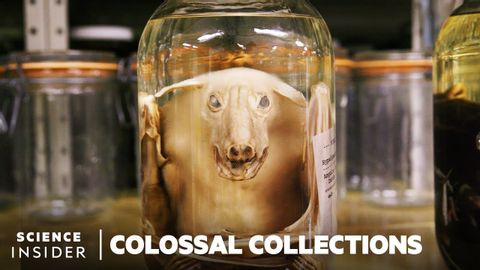為什麼菲爾德博物館的地下室裡存放著1100萬具屍體標本? (Why 11 Million Embalmed Specimens Are Stored In The Field Museum's Basement | Colossal Collections)
 沒有此條件下的單字
沒有此條件下的單字US /spɪˈsɪfɪk/
・
UK /spəˈsɪfɪk/
US /ˈprɑsˌɛs, ˈproˌsɛs/
・
UK /prə'ses/
- v.t.用電腦處理(資料);(依照規定程序)處理;處理;流程;加工;理解
- n. (c./u.)(規定的)程序;過程;進程;方法;法律程序;進程
